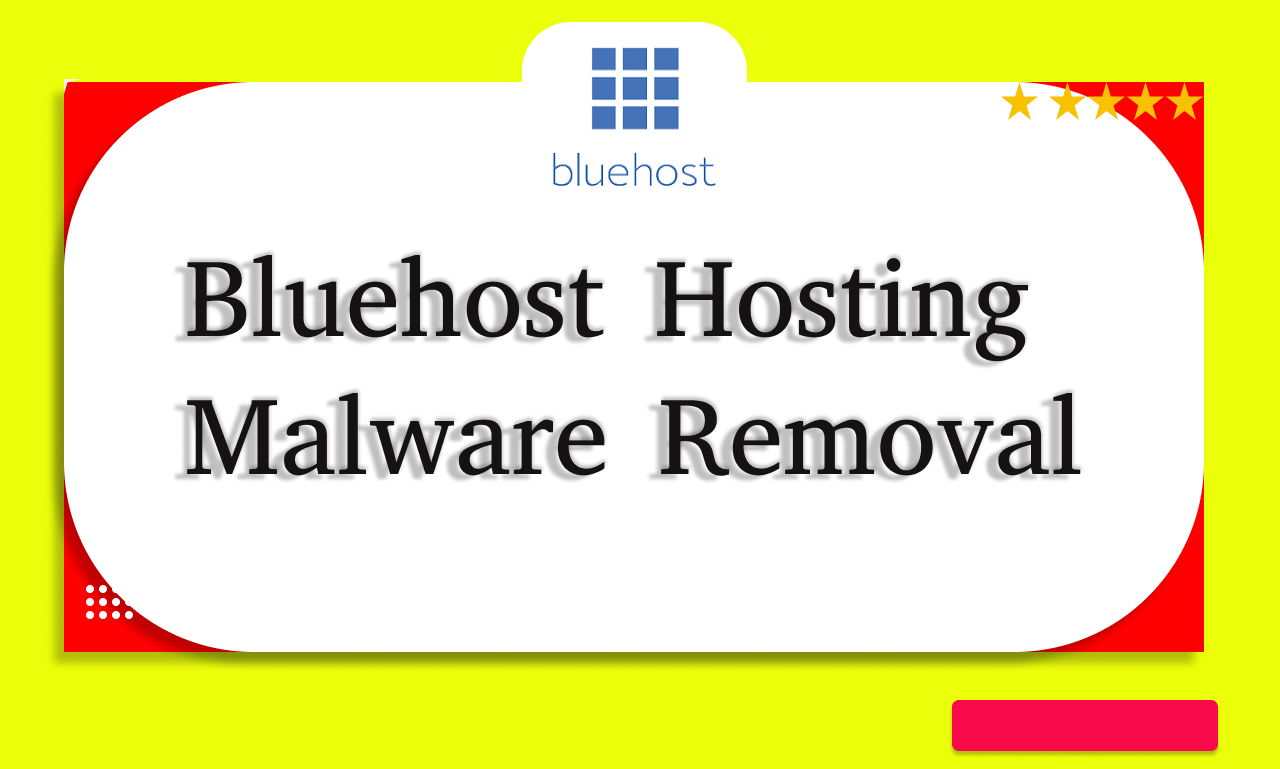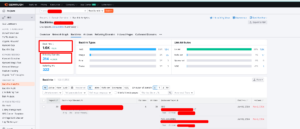Description
Is your Bluehost website infected? Don’t wait! WpPiP offers guaranteed Bluehost Malware Removal with 24/7 support. We remove malware, secure your site, and restore its performance.
Bluehost Malware Removal and Website Security Monitoring
In the ever-evolving landscape of the internet, ensuring the security and integrity of your website is paramount. With cyber threats lurking around every corner, from malicious malware to sophisticated hacking attempts, safeguarding your online assets has never been more critical. That’s where Bluehost comes in, offering comprehensive malware removal and website security monitoring services to keep your digital presence safe and secure. BlueHost offers localized domains to cater to users in various regions.
Here are some examples:
- BlueHost India (bluehost.in)
- BlueHost UK (bluehost.co.uk)
- BlueHost USA (bluehost.com)
- BlueHost Canada (bluehost.ca)
- BlueHost Australia (bluehost.com.au)
- BlueHost Europe (bluehost.eu)
- BlueHost Asia (bluehost.asia)
Regardless of your Bluehost website’s location (US, UK, Canada, etc.), WpPiP offers a single, reliable solution for malware removal. We understand the intricacies of the Bluehost platform and can effectively remove malware from your website, no matter where it’s hosted on Bluehost’s servers.
Understanding the Threat: Malware and Cyber Attacks
Malware, short for malicious software, encompasses a wide range of harmful programs designed to infiltrate, disrupt, or damage computer systems and networks. From viruses and worms to ransomware and spyware, malware poses a significant threat to websites of all sizes and industries. These malicious entities can compromise sensitive data, hijack user information, and even deface or take down entire websites, causing irreparable damage to your brand and reputation.
Bluehost Malware Removal: Swift and Effective Protection
At Bluehost, we understand the importance of proactive security measures in safeguarding your website against cyber threats. Our malware removal service is designed to detect, isolate, and eliminate malware from your website, restoring its functionality and integrity.
Our team of security experts employs advanced scanning tools and proprietary algorithms to identify and quarantine malicious code within your website’s files and databases. Once detected, we take swift and decisive action to remove the malware, patch any vulnerabilities, and fortify your website’s defenses against future attacks.
Our goal is to eradicate existing malware and prevent it from reoccurring, providing you with peace of mind and confidence in the security of your digital assets. With Bluehost’s malware removal service, you can rest assured that your website is protected against the ever-present threat of cybercrime.
Website Security Monitoring: After Bluehost Malware Removal
In addition to malware removal, we offer comprehensive website security monitoring to proactively detect and mitigate potential threats before they escalate into full-blown attacks. Our state-of-the-art monitoring systems continuously scan your website for signs of suspicious activity, including unauthorized access attempts, file modifications, and abnormal traffic patterns.
If any potential security threats are detected, our team of security experts is immediately notified, allowing us to take prompt action to mitigate the risk and protect your website from harm. Whether it’s blocking suspicious IP addresses, implementing firewall rules, or deploying security patches, we work tirelessly to keep your website safe and secure around the clock.
Some website malware that we can remove:
1. Backdoors: Hidden code that grants unauthorized access to a website’s files and systems. 2. Code Injection: Malicious code inserted into legitimate website code, often to steal data or redirect traffic. 3. Cross-Site Scripting (XSS): Exploiting vulnerabilities to inject malicious scripts into webpages, affecting user interaction. 4. Cross-Site Request Forgery (CSRF): Tricking a user’s browser into performing unauthorized actions on a trusted website. 5. Defacement: Malicious modification of a website’s content, often with a message or propaganda. 6. Drive-by Downloads: Malicious code automatically downloads malware onto visitor’s devices when they access the website. 7. Exploit Kits: Pre-built tools that automate attacks by finding and exploiting website vulnerabilities. 8. Fileless Malware: Malware that doesn’t rely on traditional files, making it harder to detect. 9. Formjacking: Stealing user information submitted through website forms, like login credentials or credit card details. 10. Hidden Malware: Malicious code disguised as legitimate content, making it difficult to identify. 11. Injections (SQL, LDAP): Injecting malicious code into databases to manipulate or steal data. 12. Iframe Hijacking: Replacing website content with an iframe displaying malicious content. 13. Malvertising: Malicious advertisements that redirect users to phishing sites or download malware. 14. Mobile Malware: Malware specifically targeting mobile devices accessing websites. 15. Phishing: Creating fake login pages or websites to steal user credentials. 16. Ransomware: Blocking access to a website or its data and demanding payment for its release. 17. Remote Access Trojans (RATs): Tools allowing attackers to control infected devices remotely. 18. SEO Spam: Injecting spam keywords to manipulate search engine rankings for the website. 19. Session Hijacking: Stealing a user’s session ID to impersonate them and access their account. 20. Skimming: Stealing credit card information during online transactions. 21. Social Engineering Attacks: Manipulating users into taking actions that compromise website security. 22. Spam Bots: Automated programs that spam message boards or comment sections on a website. 23. Spyware: Software that gathers information about users’ activity without their consent. 24. Steganography: Hiding malware within seemingly harmless files like images or videos. 25. Trojan Horses: Programs that appear legitimate but contain hidden malicious functionalities. 26. URL Redirects: Malicious redirects take users to phishing sites or malware download pages. 27. Watering Hole Attacks: Targeting websites frequented by a specific group of users to infect their devices. 28. Web Bugs: Tiny images embedded in websites to track user activity without their knowledge. 29. Website Backups: Malware that backs up a website’s data for future attacks or data theft. 30. Worms: Self-replicating malware that spreads across websites within a network. 31. Web Shell Uploads: These scripts grant attackers remote access to your website. 32. Defacement Attacks: Hackers alter your website’s appearance with their content. 33. Cryptojacking Malware: Uses your website’s visitors’ processing power to mine cryptocurrency. 34. Backdoor Malware: This creates a hidden entry point for attackers to regain access to your website. 35. SQL Injection Attacks: Exploiting vulnerabilities to inject malicious code into your website’s database. 36. Brute-force Login Attempts: Automated attempts to guess your login credentials. 37. Watering Hole Attacks (Targeted): Targeting websites frequented by a specific user group with malware relevant to their interests or industry. 38. SEO Black Hat Techniques: Unethical methods to improve search engine rankings, often harming user experience. 39. Malicious SEO Redirects: Redirects to spammy or irrelevant content to manipulate search rankings. 4o. Traffic Bots: Malicious bots that generate fake website traffic to inflate metrics or manipulate analytics.
Bluehost Hosting Malware Removal Service Includes:
✅ Hacked website clean Backup files and database
✅Deep malware Scan of all Files and WordPress malware removal
✅Manually remove malware from Full Server or Cpanel
✅Hosting suspension removal
✅Fix redirecting issues
✅Blacklist removal (Google, Norton, McAfee, etc)
✅Google Japanese spam link removal
✅Plugins update
✅Fix website errors
✅SSL Installation
✅Any issue or bug Fixed
✅30 days support
Why Choose Us for Bluehost Malware Removal
At WpPiP, we understand the paramount importance of safeguarding your website against the ever-looming threat of malware. When it comes to removing Bluehost malware, we stand out as your trusted partner in ensuring the security and integrity of your digital assets. With years of expertise in the field, our dedicated team of professionals employs cutting-edge techniques and advanced tools to effectively identify, isolate, and eradicate malware from your website. What sets us apart is our commitment to delivering swift and reliable solutions tailored to your specific needs. From thorough malware scans to meticulous cleanup processes, we leave no stone unturned in restoring your website to its pristine state. Choose WpPiP for Bluehost malware removal, and rest assured knowing your website is in capable hands.
Don’t let a malware infection cripple your website’s performance. Contact us today for a free consultation to discuss your specific situation and how our Bluehost Malware Removal and Website Performance Optimization service can help you reclaim your website’s health.












Reviews
There are no reviews yet.